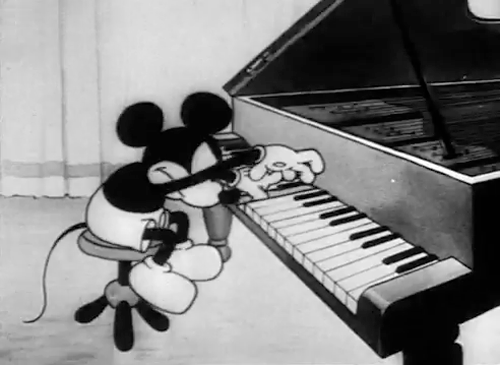

GIDDY GUITARISTS

Middle C
INTRO TO GENERAL MUSIC: HOW TO READ MUSIC
SCALES
Lastly, we have the scales in order to master reading basic music! Great job fellows! Now, there are actually many scales, which are sets of notes that are ordered by fundenmental frequency or pitch. Some include A# Major, G Major, E harmonic minor,etc. However, we only need to learn the basics of the foundation of scales. Let's do it, guys!

Ah, finally! On with the scales! So the simplest scale to play is the C major scale. In this scale, there are absolutely NO accidentals. No. None. Nada. This means that you only play the white keys from the middle C key to the next C in the next octave, or set of 8 keys, and then back down the notes to the middle C key again. So you would play the scale like this:

The numbers tell you which fingers are used to play each key/note with (1; thumb, 2; index, 3; middle, 4; ring, 5; pinkie)
To begin with, we have to know where the musical alphabet is on sheet music. On the treble clef side, the notes are in different positions than the base clef side. See this as an example.

See where the notes G, A. B, C, D, E, and F are in the middle (where the middle C is sandwiched together)? These notes on the treble and base clef are written differently right? However, they're the same exact notes on the piano! That's because the treble clef notes refer to the upper section of the keyboard while the base clef notes refer to the lower section of the keyboard. In guitar, we mainly play in the treble clef section, so we are only gonna learn where the letters are in that area. Starting from the structure of the staff, it only has 5 lines and 4 spaces right? Well, on the treble clef, the notes on the lines are E, G, B, D, and F. The spaces are for the notes F, A, C, and E. Here's a mantra for the line notes: Every Good Boy Does Fine. On the other hand, you can remember the space notes because they spell out FACE.
Notice how the note for Middle C isn't on the diagram. Since all the lines/spaces are already occupied, where does it go then? When the notes go over or below the 5 lines of the staff, they have ledger lines that are used to represent "invisible" or additional lines of the staff, so you know where the higher or lower notes of the different clefs are supposed to be. That's exactly what middle C does to take its rightful place in the staff. It uses one ledger line to mark itself on the spot (or line...which one is it???) Higher and lower notes than the staff can use as many ledger lines to mark themselves, usually up to 4-5 lines at most.


There are also many scales with accidentals in it. To play a scale with accidentals, you must first notice what type of scale it is, or see what key signature it has. For example, we will play the D Major scale, which has the key signature/accidentals of C# and F#. So, you would play the scale with all the white keys, except for the accidental ones in order to make it a D major scale; which would be D, E, F#, G, A, B, C#, D and vice versa when going back down. Remember: playing a scale is a set of specific notes in order if you want to play a certain scale. See my point? Great! You follow the same steps of playing a scale for any certain scale you choose, just like how we did with the D Major scale.
CONGRATS!

YOU JUST PASSED LEARNING ABOUT SCALES & HOW TO PLAY THEM!!!
LEARN MORE
& EXPLORE IN...
1
2
3
4
5
6

